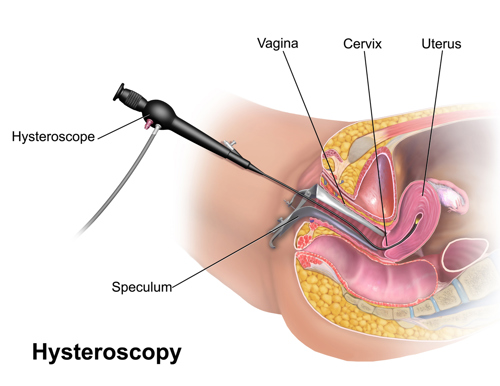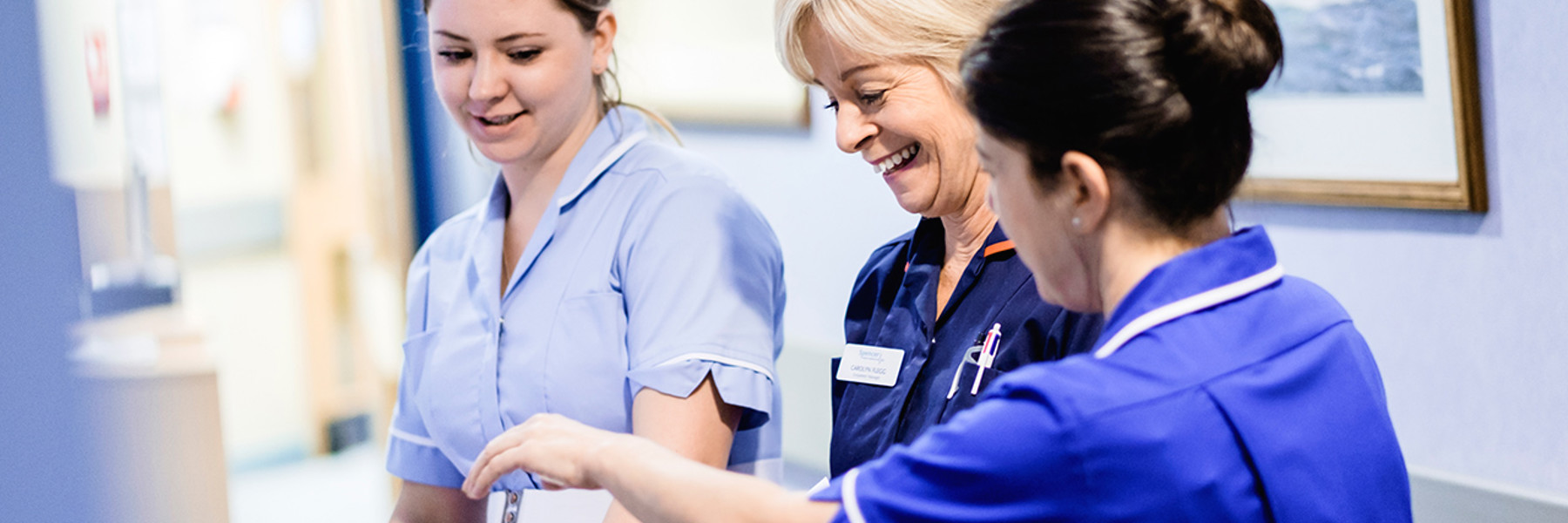Hysteroscopy
A hysteroscopy is a procedure that uses a small instrument called a hysteroscope to look at the inside of the uterus. It can be performed as an outpatient procedure with or without a local anaesthetic (you will be awake but you won’t feel any pain). Or it can be done as an inpatient procedure under general anaesthetic (you will be unconscious throughout the procedure).

A biopsy is usually performed alongside a hysteroscopy where a small piece of the lining of the womb is removed. This sample is then looked at under a microscope and helps the consultant to identify any problems or causes for any symptoms. Some common conditions that hysteroscopy is used to identify are:
- Fibroids – A non-cancerous growth made of muscle and tissue of the womb. Sometimes they are referred to as uterine myomas or leiomyomas.
- Polyps – Small, flat bumps that are caused by abnormal tissue growths. These can be both benign and malignant, but they carry very little malignant potential.
- Endometrial cancer - A malignant growth on the lining of the womb. The earlier this is caught the better.
- Abnormally shaped womb – This can cause problems with conceiving and further along can cause problematic labour and delivery. This is sometimes associated with miscarriages and abnormal uterine bleeding.
For further information please download our leaflets on the Outpatient Hysteroscopy procedure as well as post clinic information.
